Original Source: 亿邦动力
Author: Hu Puxin
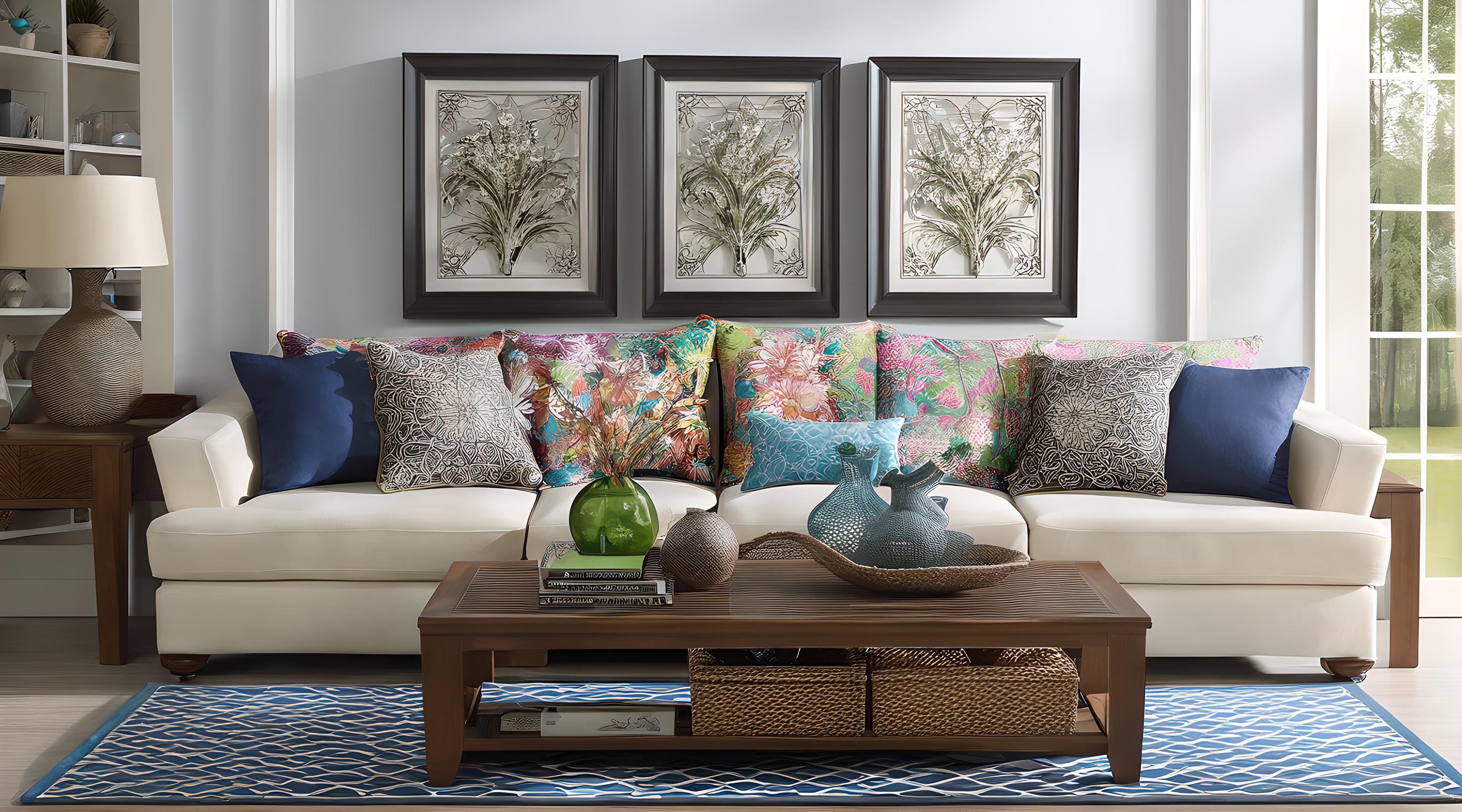
Image Source: Generated by Wujie AI
Have you ever thought about designing your own home?
Just upload a photo of the bare house to an AI home design software, add descriptive words such as "retro, warm, suitable for daydreaming," and a few realistic decoration renderings will appear. You can also adjust color matching, lighting types, exterior views, add furniture, "This process is like playing a dress-up game," said a user who experienced AI home design.
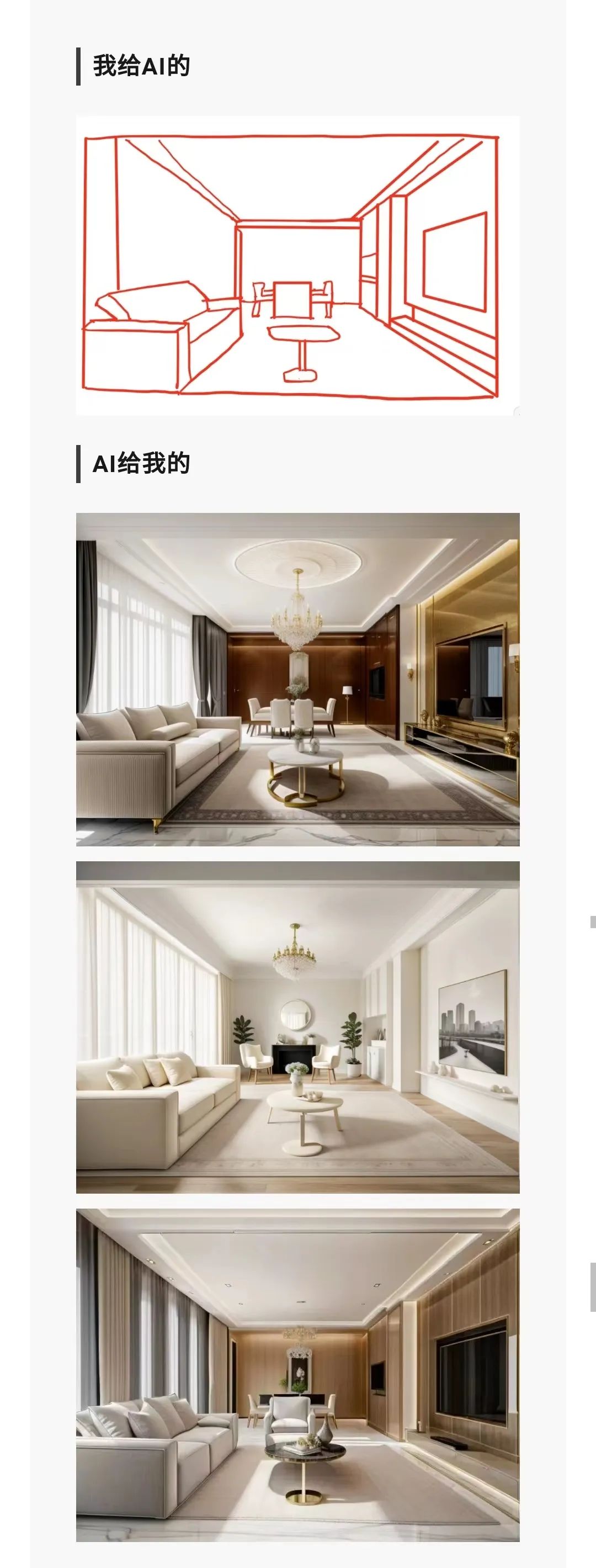
Image Source: Kujiale AI
If the improvement in computing power and rendering engines over the past few years has led to an increasing number of individual users and designers accepting cloud-based home design software, then the assistance of AI, especially the disruptive impact of generative large models on design, has taken AI home design to a new stage.
Currently, AI's application in home design software mainly focuses on improving drawing efficiency, providing design inspiration, intelligent error correction, and other aspects. As AI's application in home design software deepens, it is not only expected to significantly reduce the threshold for designers, break through the growth limitations of dealers and brand merchants, but also to present consumers' any demands in design solutions and integrate with backend production, truly achieving personalized custom design.
According to Frost & Sullivan and data from the China Industrial Research Institute, it is estimated that by 2024, the sales of the furniture decoration and furniture industry in China will exceed 4.83 trillion yuan, with a compound annual growth rate of over 20%, and the scale of the custom furniture market is expected to exceed 500 billion yuan, with a compound annual growth rate of over 16%. Among them, the main demands include the initial decoration of newly purchased bare houses, the re-decoration of newly purchased furnished houses, the renovation of newly purchased second-hand houses, and the renovation of existing houses.
"Why does the home appliance industry have companies with 100 billion or 200 billion in revenue, but the home furnishing industry does not?" Cai Zhisen, CEO of Three-dimensional Home, raised the "soulful question," "Home decoration is indeed quite complex, whether it's sales consultation, whole-house design, physical modeling, or the commercialization of materials, quoting, ordering, and distribution are all issues. If we can integrate non-standard and standard parts with just one drawing, and complete marketing, design, ordering, production, and delivery in one stop, we can make furniture and home decoration achieve a high degree of automation and intelligence, just like the home appliance and automotive industries."
AI Empowerment Lowers Design Threshold
Interior designer Yang Mingyu is a rising star in the industry. He runs a designer studio called "Wuwo Art Home" and previously appeared on Hunan Satellite TV's designer variety show, helping with interior renovations for celebrities such as Su Xing and Wang Lixin. Yang Mingyu believes that in the process of discussing with clients, creating CAD drawings, and modifying renderings, AIGC can save designers at least half of their time.
In the past, designers needed to measure the structure of the bare house on-site and draw it into CAD, a process that took 1-2 weeks. Now, clients can take a few interior photos, or designers can simply sketch a few lines, and AIGC can directly generate real-size CAD drawings, producing a set of interior layout templates in just one minute.
Based on the CAD drawings, Yang Mingyu also needs to repeatedly adjust and finalize the decoration renderings according to the elements the client desires, such as style, color, layout, and lifestyle.
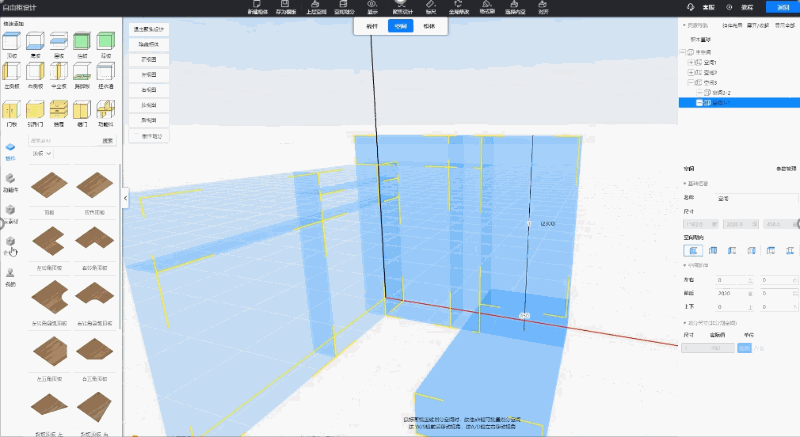
Image Source: Three-dimensional Home
This process requires the combination of CAD and 3DMax to render the renderings for clients to reference and modify. 3DMax is the standard for rendering renderings, and it takes an hour to render one image. Making a small detail change, such as changing the apple on the table to a pear, requires another hour, which Yang Mingyu says is "frustrating."
The AIGC tool does not have this problem. It can make detailed changes, change backgrounds, and provide design inspiration proactively. Coupled with a high-performance rendering engine, it can render 4 new design images in just 1 minute.



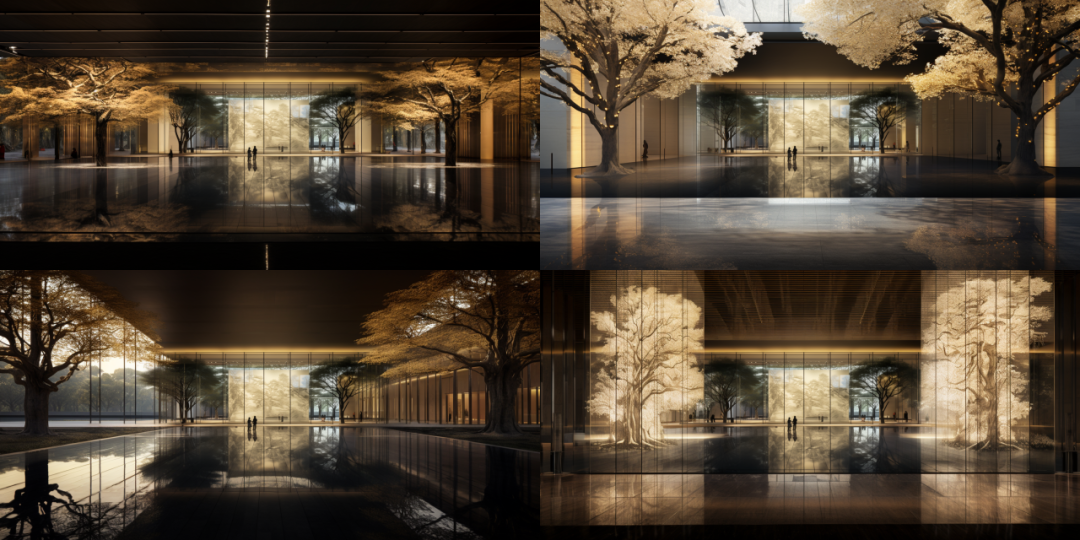
Image Source: Wuwo Art Home
With the AIGC tool, Yang Mingyu's project time is cut in half. "Now, CAD can be completed within a week; communication and modification of renderings for small three-bedroom and large three-bedroom, 80-100 square meters, can be completed within a month. Then it enters the construction phase."
For furniture manufacturers and custom manufacturers, AIGC not only applies to product design but also facilitates store sales and online marketing.
The decision-making cycle for home furnishing customers is as long as 30-90 days, and offline stores are still the main channels. In order to convert customers who enter the store into orders, brand merchants are racking their brains.
According to a survey by Three-dimensional Home in 2022 of nearly a hundred soft home furnishing stores, when faced with customers who need renderings, 26% of salespersons choose to show customers Taobao product pages or official websites, 63% guide customers to experience physical products on-site, and less than 6% will provide renderings to customers. Therefore, Three-dimensional Home has launched 3D Show, where salespersons only need to import the floor plan, and all other processes are autonomously completed by AI, generating a VR panoramic image in just 10 minutes.
"CAD software requires a learning curve. Although our cloud design is much more intelligent than AutoCAD and 3DMax, it is still not plug-and-play. I think this round of AI is intended to allow our users to use it without any threshold," said Cai Zhisen.
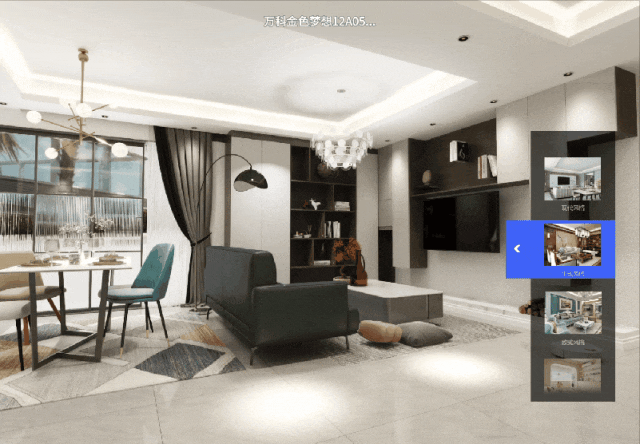
Image Source: Three-dimensional Home
Based on the 3D virtual live rooms, 3D sample rooms, and 3D exhibition halls constructed by AIGC, each designer at Meiping Meiwu showcases the diverse immersive scenes of furniture, highlighting the color, material, size, and style of the products. For short video and image content production, Meiping Meiwu Design Home has launched 3D popular product studio shooting, where the entire process from selecting the studio, changing products, selecting lenses/paths, and submitting rendering is completed by the platform, and the generation of a "masterpiece" only takes a few minutes.
Kujiale also launched the AI studio shooting feature of Kujiale Studio Shooting 2.0, based on Kujiale's original 3D rendering technology and massive materials, forming an artificial intelligence commercial shooting platform. Without the need to set up scenes, no more cutting, framing, or adjusting lighting and shadows, just upload a product image, and AI automatically cuts the image and generates multiple scene product images based on style and elements.

Image Source: Kujiale Studio Shooting 2.0
Chen Hang, CEO of Qunhe Technology (Kujiale), believes that the home furnishing industry is a service-oriented industry, penetrating consumers through services, and the service process is often time-consuming, labor-intensive, and requires manual effort. The combination of human and AI will create a more powerful service capability, bringing the best service to everyone, which is a huge opportunity.
From "Drawing" to "Building" with AI
The next question is, can the drawings produced by design software really be produced? Can they be decorated exactly the same?
Yang Mingyu understands this concern from clients. In the design field, especially in home design related to physical objects, the discrepancy between the drawing and the actual result is the biggest problem. Interior designers need to achieve a "what you see is what you get" result, "just like eating instant noodles, the packaging shows a lot of beef, but when you open it, there's not much." Yang Mingyu added.
This is also a problem that general drawing models are difficult to solve.
Chang Yao, the founder of Wujie AI, found that interior design has rational requirements for lighting and spatial layout, and the lighting and shadows need to conform to optical principles, the position of light sources needs to be accurate, and the interior layout needs to conform to industry-standard design norms. Currently, most AI images can meet the requirements for style and aesthetics, but they lack rationality and logic in the images.
The images generated by Midjourney and Stable Diffusion focus on creating something out of nothing, novelty, and interest, but they cannot truly enter the production line.
Qian Min, the principal of Yixian Design, has been using AI drawing tools for half a year. He believes that Stable Diffusion and Midjourney are more suitable for creative design. The biggest problem with interior design is that changing the angle will change the details, size, and layout of the plan. If you want to restore it according to the actual size and proportion, the design time will increase significantly, and the efficiency will decrease relatively.
"Midjourney randomly generates a living room with a height of five or six meters, which looks beautiful, but the actual result is not that high. Stable Diffusion can control the scale, but the aesthetics are not as good as Midjourney. In short, the higher the randomness of AI, the harder it is to control." Therefore, Qian Min combines the use of multiple design tools such as Stable Diffusion and Midjourney.
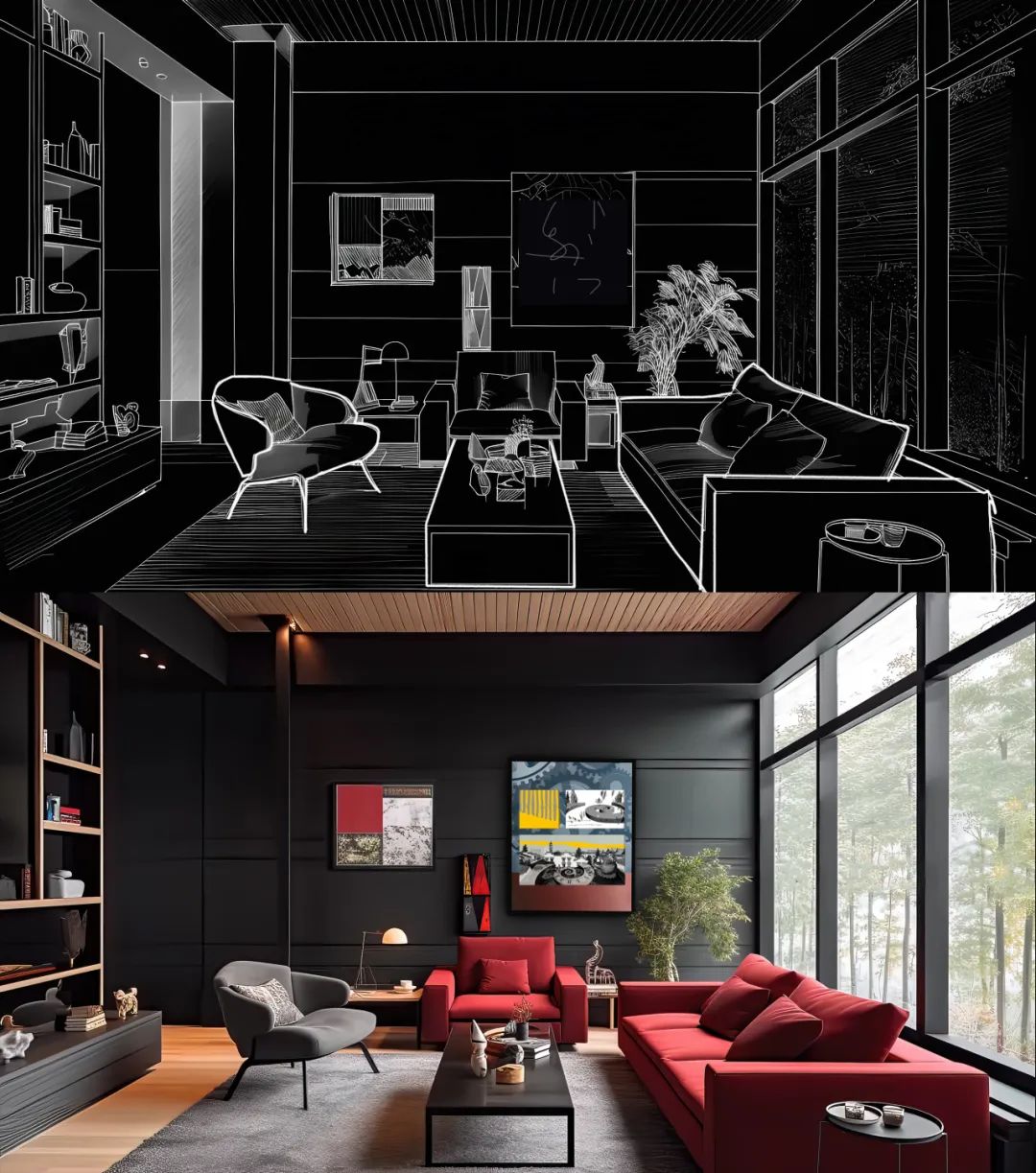
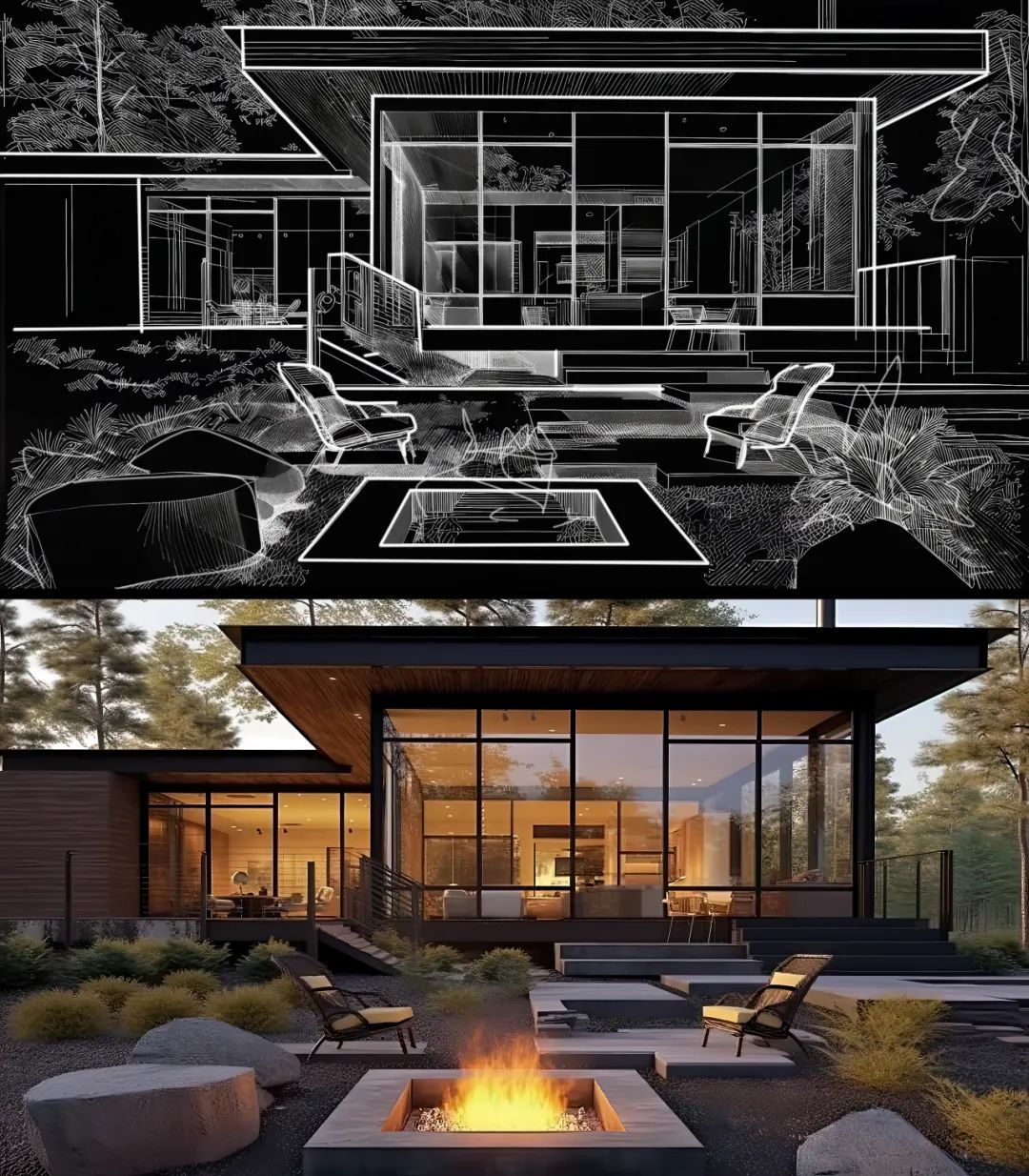
Image Source: Yixian Design
How to train an AIGC tool for the home industry? Three-dimensional Home CEO Cai Zhisen believes the core lies in vector datasets.
Vectors, also known as vectors, refer to quantities that have both magnitude and direction. Vector data is generally expressed through coordinates, accurately representing the spatial position of objects. "The design drawing seen by the user seems to be a flat image, but all the tables, chairs, benches, wallpaper, floor tiles, washbasins, and TV cabinets in the drawing have relative positions and sizes, all of which are vector data," pointed out by Yang Mingyu.
For example, a physical sofa, when viewed from top to bottom or from left to right, has fixed dimensions and lines. At the same time, the size, color, and pattern of the sofa can be scanned as a physical asset, a vector model, which designers use to create designs. "You can take a random indoor photo and generate a brand-new design drawing through AIGC, and the shape and texture are controllable. This is the role of vector AI, which comes with production data," explained Cai Zhisen.
Behind the vector dataset is a massive industry data asset.
For example, Three-dimensional Home has over 20 billion large model parameters for home decoration and millions of real cabinet datasets. "Currently, we have approximately 1 billion levels of housing data, with at least 1,000 parts data in each house, and each part has hundreds of attribute labels. Approximately millions of houses are generated through cloud design every day," said Cai Zhisen.
Based on this industry data, in July, Three-dimensional Home launched the "Whole-house AI Brain" (Three-dimensional Home Vector AI Large Model). The vector AI large model can perform AI design for the entire home space, as well as AI design for a specific wardrobe or cabinet, and can generate brand-new design drawings based on photos or sketches. "Our AI model also has great scalability because AI is a recommendation algorithm that can link regional and national parts to form a national linked ecosystem. This allows us to provide customers with implementable whole-house customization," explained Cai Zhisen.
At the Taobao Tmall Home Furnishing and Home Ecology Conference on August 14, 2023, Meiping Meiwu Design Home launched a 3D digital product matrix, including 3D scene switching live broadcast, 3D popular product studio shooting, and a global marketing platform.
The head of Meiping Meiwu Design Home previously stated that they will integrate the application capabilities of AIGC into the Taobao ecosystem, and integrate the technical capabilities of Meiping Meiwu Design Home and the Taobao home furnishing industry in AI intelligent design, 3D intelligent scenes, digitalization of e-commerce and offline stores, and global content marketing into the home furnishing consumer scene.
Qunhe Technology, which has accumulated over 270 million product material models, also released Kujiale AI, which can generate decoration renderings from real-life images, generate creative solutions from floor plan images, and automatically replace product scenes with AI. Kujiale AI's capabilities are not limited to decoration scenes and also extend to more segmented industries such as customization, doors and windows, building materials, as well as more spatial scenes such as offices and dining. The customized style model for designers and enterprises under "Kujiale AI" is about to be launched.
In addition to the massive product material models, Qunhe Technology also covers nearly 90% of new house floor plans in the past five years. Currently, it is widely used in the InteriorNet dataset for deep learning of interior scene recognition, with a total rendering volume on the platform exceeding 3.3 billion images.
Chen Hang, CEO of Qunhe Technology, pointed out that the application scenarios of Kujiale AI are divided into three categories: unlimited inspiration image generation for homeowners, precise and controllable AI creative design for designers, and AI product selection for brand store salespersons. "The consumers, designers, and enterprises in the home furnishing industry are undergoing a productivity revolution. In the future, the 'heterogeneous computing' formed by human + AI will bring about further breakthroughs in consumer experience," summarized Chen Hang.
How can the manufacturing industry achieve "one drawing to the end"?
Despite the convenience and doubled efficiency of AIGC, Yang Mingyu found that many interior designers are not concerned about it.
"After all, everyone's workload is not yet complete, so they are not concerned about AI for now," Yang Mingyu believes that home furnishing designers are oversaturated with daily work, leading to many designers being insensitive to change. Research by Beike Institute found that in addition to drawing up plans, designers also need to communicate frequently with clients and partners, while also dealing with various unexpected events. "Frequent overtime," "long working hours," and "little rest time" are the main pain points.
At the same time, the impact of AIGC on interior design is far less rapid than on graphic design and fashion design.
Designers include graphic design, fashion design, product design, interior design, and architectural design, and designers in different industries are affected differently by AIGC. Yang Mingyu believes that graphic design was the first to be affected, followed closely by fashion design, while the impact on interior design and architectural design is relatively lagging. "When fashion design has finished revolutionizing itself, then it's our turn in interior design to revolutionize ourselves," according to Yang Mingyu.
However, for design software manufacturers and brand merchants, many people realize that this is an extraordinary development opportunity.
Three-dimensional Home CEO Cai Zhisen still remembers the impact that large models had on him when they first appeared. "We have been doing AI all along, but everyone was constantly investing while doubting life, going through repeated torment, and experiencing both heaven and hell. ChatGPT first gave practitioners confidence, allowing us to invest more resolutely in AI," Cai Zhisen believes that in the long run, AIGC brings three major benefits to home furnishing design.
First, AIGC accelerates the iteration speed of design products, achieving a similar update speed to Moore's Law for SaaS products.
Second, AIGC solves the usability issues of design tools.
Third, the popularization of design tools will accelerate the industrialization of the entire furniture and home furnishing industry.
Lower usage thresholds mean higher industry penetration rates and more revenue. Cai Zhisen said, "For design software in vertical segmented industries, market share rates are only a few thousandths. I think this time AI should be able to quickly push our market share into double digits, and is expected to break through 20% or 30% market share more quickly. Breaking through double-digit market share means that SaaS manufacturers can break the curse of 1 billion in revenue."
In the past, the product drawings in the furniture and home furnishing industry were in different formats. "In the past, designers used 3DMax for renderings, AutoCAD for construction drawings, AutoCAD for factories, Excel for BOM tables, and brand merchants bought a bunch of ERPs that they didn't need, and it was very painful to coordinate them. If we can use the same software to place orders and disassemble orders, create renderings, and control machine tools, the collaboration speed of the industry chain will reach new heights," pointed out by Cai Zhisen.
Furniture and home furnishing brand merchants also see an opportunity to expand their management radius and break through growth bottlenecks.
The home furnishing industry chain is long, the products are diverse, the level of personalization is high, and the service provider's capabilities are not standardized, resulting in a low market concentration, forming the industry characteristic of "large industry, small companies."
Under the trend of "whole-house customization" integrating all categories, backend production determines delivery efficiency, installation success rate, and the ability to achieve "what you see is what you get." In addition to AI application on the design side, the integration of front-end and back-end systems and the intelligentization of the backend production process are also the focus of manufacturers.
For example, Oppein Home's CAXA software integrates design renderings, quoting, wireframes, ordering, and automatic disassembly into one, saving nearly 6 hours in the backend process. Sofia's factory uses CNC digital control systems to process production process data more quickly and make production forecasts, improving board utilization and effectively reducing wood resource waste. At the same time, the robot board sorting rate is nearly 100%, and the accuracy is at a leading level in the industry, controlling losses in the manufacturing sorting process.
Through the integration of the entire category and process, brand merchants can quickly match front-end design solutions with back-end automated production data, avoiding the inefficiency and errors of manual disassembly, allowing orders to enter the production process more quickly, and improving overall production efficiency.
Some industry analysts believe that as AI continues to empower the front-end design and back-end production processes in the home furnishing industry, leading home furnishing companies are expected to further expand their advantages in the AI era based on their financial and technological advantages, breaking through the growth bottlenecks caused by human limitations and continuously increasing their market share.
免责声明:本文章仅代表作者个人观点,不代表本平台的立场和观点。本文章仅供信息分享,不构成对任何人的任何投资建议。用户与作者之间的任何争议,与本平台无关。如网页中刊载的文章或图片涉及侵权,请提供相关的权利证明和身份证明发送邮件到support@aicoin.com,本平台相关工作人员将会进行核查。




